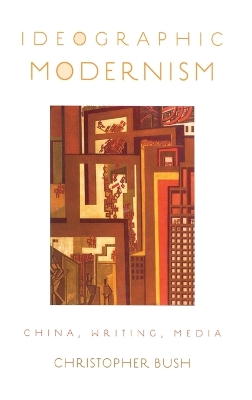The ideograph is conventionally understood as a script that is ancient and Chinese; it is neither. The 'ideograph' is a modern Western invention, one contemporaneous with, and related to, such modern inventions as photography, phonography, and cinematography. Ideographic Modernism analyzes the collective significance of an array of figures of Chinese writing in Euro-American literature, showing how the ideograph becomes, in the modernist era, a prism through
which to imagine the world in ethnographic and in technological terms.
Chapters on writing-as-image take up Kafka's 'An Imperial Message' and the way photography works as a model of vision without consciousness in the poetics of Imagists and their seeming opposite number, the French allegorist Paul Claudel. Chapters on writing-as-inscription, focus on Victor Segalen's Steles (1912), a prose poem collection that formally emulates the Chinese stone monuments from which it takes its name; and on a series of generally unremarked references to Chinese
writing in the work of Walter Benjamin. A final chapter considers Paul Valery's response to the now almost forgotten Sino-Japanese War of 1894-95, tracing Valery's challenge to envision Western History had it engaged with real China, China-as-China, from the start. Overall, the study reveals the richness of the
'ideograph' as simultaneously 1) a prominent example in the imagining of China as a cultural other; 2) a way of imagining the origin, history, and possible futures of writing; and 3) a registration of the cultural effects of modern technological media.
- ISBN10 0195393821
- ISBN13 9780195393828
- Publish Date 4 February 2010 (first published 1 January 2010)
- Publish Status Active
- Publish Country US
- Imprint Oxford University Press Inc
- Format Hardcover
- Pages 208
- Language English
